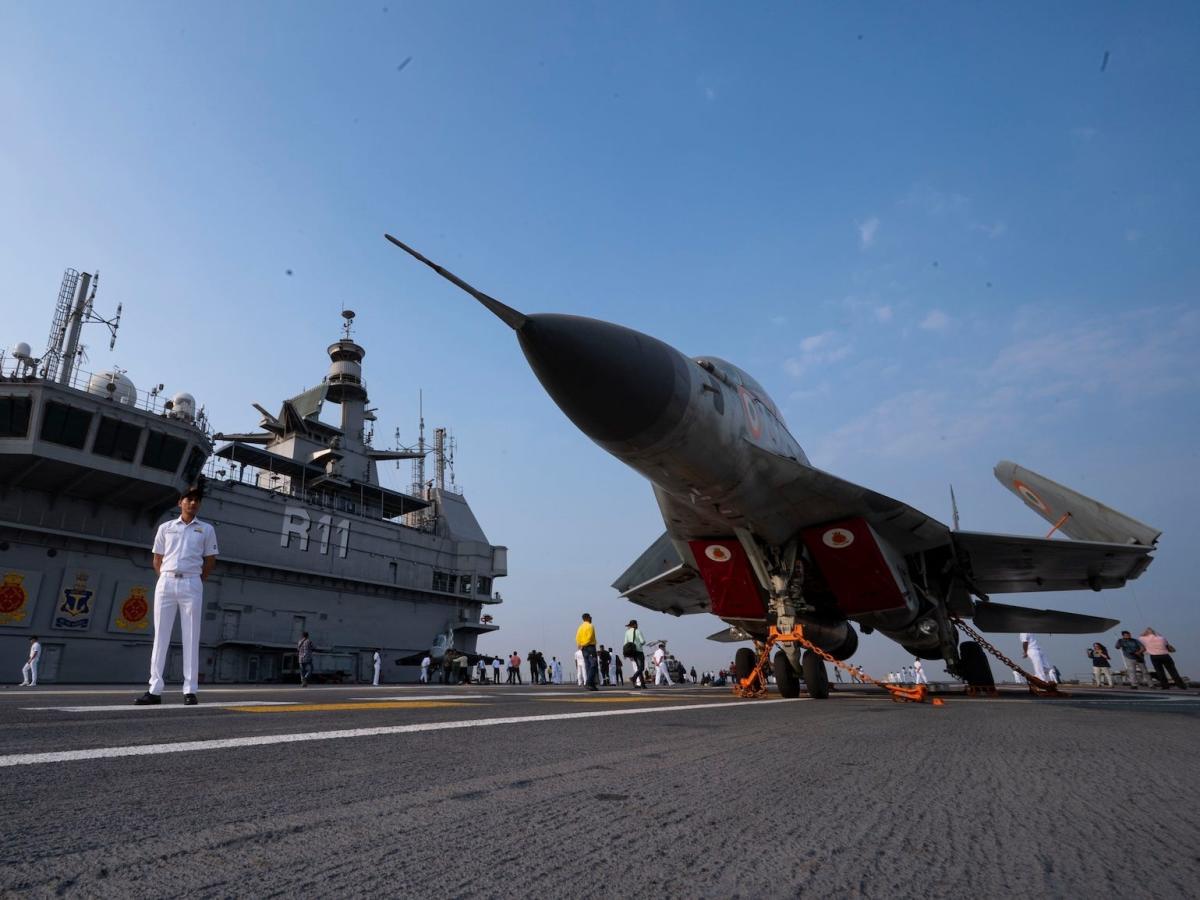-
“We will not stop at that (three carriers),” India’s defense minister said recently.
-
Five or six aircraft carriers would give India a fighting force equal to China’s.
-
“Unfortunately, the country lacks the financing for a major airline,” one analyst told BI.
India could build a fleet of five to six new aircraft carriers, according to a comment from the country’s defense minister that has been hotly debated over whether that’s a good strategy or if the passing comment was even serious.
The Indian Navy operates two small aircraft carriers. Four more would give India an aircraft carrier comparable to China’s. And it wouldn’t be much smaller — at least in terms of ship count — than the U.S. Navy’s eleven supercarriers.
But whether this ambitious shipbuilding project will happen is another matter. Many Indian experts are convinced that this is a bad idea.
It is not clear what exactly the Indian government is thinking. During an interview with an Indian newspaper about plans to build a third aircraft carrier, Defense Minister Rajnath Singh said India would build more. “We won’t stop at that (three carriers),” he said. “We’ll make five, six more.”
Some Indian experts are not sure the government is serious about this. The defense minister “apparently made an off-the-cuff comment that was picked up by the media,” Abhijit Singh, a former Indian naval officer and now an analyst at the think tank Observer Research Foundation in New Delhi, told Business Insider. “He was merely trying to dispel the suggestion that the government is opposed to a proposal for a third aircraft carrier.”
Nevertheless, there are compelling reasons why India would want to have a large airline fleet. India’s rival China now has three airlines, including the recently launched 80,000-ton Fujian, and may be targeting a fleet of six airlines by 2035. China – which fought border clashes with India in the Himalayas in 2020 – is beginning to project its power into the Indian Ocean, India’s maritime backyard.
‘It is expected that the Chinese will station one of their MEBs permanently [carrier battle groups] in the Indian Ocean, supported by the various bases in Djibouti (on the western edge of the Indian Ocean), Ream in Cambodia (on the eastern edge of the Indian Ocean), and Gwadar in Pakistan, Hambantota in Sri Lanka and Kyaukpyu in Myanmar ”, warned the Indian magazine Swarajya.
Interestingly, Swarajya magazine also suggested that airlines could project Indian power in the South China Sea, China’s maritime backyard. Indian warships have periodically sailed in these waters.

India has two carriers of about 45,000 tons each: the Vikramaditya (a renovated former Soviet ship) and the Vikrant, India’s first home-built carrier. Both are ski jump designs that launch the troubled Soviet-era MiG-29K under its own power because it has no catapults. Despite early speculation that the proposed third aircraft carrier would be a 65,000-ton ski jumping design, similar to Britain’s Queen Elizabeth class, the Indian government appears to be opting for a 45,000-ton ship, similar to the Vikrant, carrying France’s Rafale make. fighters.
This means that Indian carriers will still be less than half the size of America’s 100,000-ton nuclear-powered Nimitz- and Ford-class behemoths, which are equipped with steam or electromagnetic catapults that can launch heavier aircraft, with in particular for airborne early warning. airplanes; China’s Fujian also uses an advanced electromagnetic catapult. They would also be cheaper, with the third Indian carrier valued at around $5 billion, compared to $13 billion for a Ford-class airline.
Some Indian naval experts would even prefer a larger aircraft carrier equipped with catapults. “Small aircraft carriers, such as the ones India possesses, are increasingly vulnerable and are unlikely to play a significant role in future conflicts,” said Singh, the defense analyst. “Unfortunately, the country lacks the financing for a major airline and can only afford a small flattop. This presents a predicament for which there are no easy solutions.”
On the other hand, there is a reason America builds hugely expensive aircraft carriers. The country’s global interests likely require the ability to operate and maintain floating airfields around the world, often in remote places where air bases are not available. For India and China, which have a more regional focus, smaller ships may suffice.
For India, airlines are more than floating airports. They are symbols of national power. So regardless of their military utility against a powerful adversary like China, airlines would enable India to support other operations such as humanitarian, peacekeeping and anti-piracy missions.
“The consensus among Indian maritime observers is that the aircraft carrier remains central to the maritime strategy, not only because of its ability to dominate the coast but also because of its crucial role in peacetime,” said Abhijit Singh. “In less-than-war situations, the flattop can shift the psychological balance in ways that no other naval platform can. Despite its drawbacks, the aircraft carrier’s presence and impact in peacetime operations are unparalleled.”
Michael Peck is a defense writer whose work has appeared in Forbes, Defense News, Foreign Policy magazine and other publications. He has an MA in Political Science from Rutgers Univ. Follow him further Tweet And LinkedIn.
Read the original article on Business Insider







